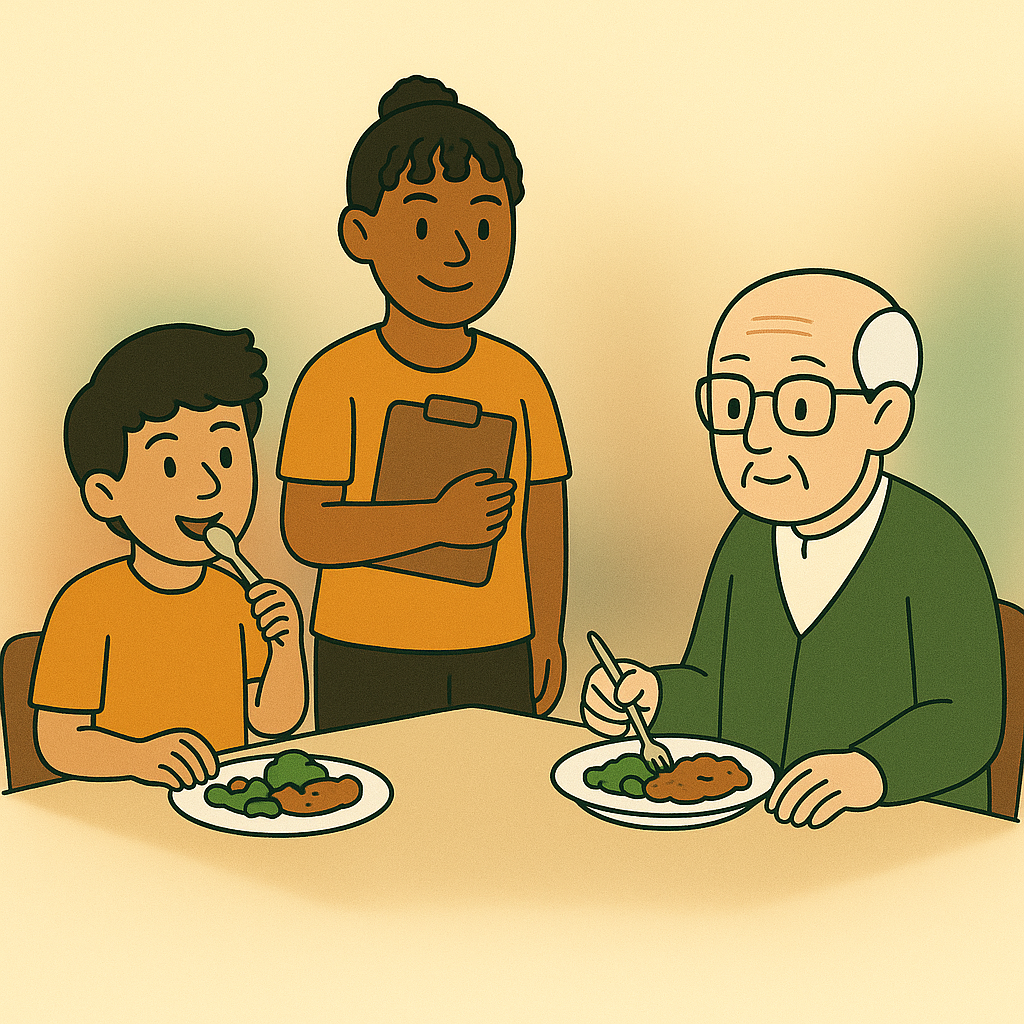7-minute read
Ever heard of #SwallowTok?
If not, you’re not alone—but you might be missing out on one of the most powerful healthcare awareness movements growing on social media today.
Whether you’re an SLP, caregiver, or someone who’s struggled with swallowing, this TikTok trend is turning the spotlight onto dysphagia—a medical condition that affects how people swallow food and liquids. The videos are raw, informative, sometimes humorous, and often deeply moving. They’re changing the conversation around dysphagia care, therapy tools, and accessibility like never before.
And let’s be honest—how often do swallowing disorders go viral?
Affiliate Link Disclosure:
This post may contain affiliate links. If you purchase something through the recommended links, I may earn a small commission at no extra cost to you. As an Amazon Associate, I earn from qualifying purchases. Thanks for your support—it helps me continue creating free resources for therapists and caregivers.
What Is Dysphagia, Really?

Dysphagia is the medical term for swallowing difficulties. It can impact people of all ages, but it’s especially common after stroke, neurological conditions like ALS or Parkinson’s, or in individuals with head and neck cancer.
Signs of dysphagia include:
- Coughing or choking during meals
- Food getting “stuck”
- Wet or gurgly voice after eating
- Unexplained weight loss
- Frequent pneumonia or respiratory issues
Left untreated, dysphagia can lead to aspiration, malnutrition, dehydration, and serious health risks. That’s why early identification and intervention by a speech-language pathologist (SLP) is critical.
The Rise of #SwallowTok: Awareness in Action

So, how did swallowing therapy end up trending online?
Thanks to creators like @carrie_clark_slp, @dysphagiaduo, and @sprucestreetslp TikTok is now home to countless videos explaining swallowing strategies, signs of aspiration, oral motor exercises, and clinical tips. These professionals break down complex concepts into bite-sized, easy-to-digest formats (pun intended), making dysphagia education accessible to a broader audience.
You’ll find:
- Real-time demos of thickened liquids
- Safe swallow techniques like the chin tuck
- Behind-the-scenes looks at FEES and MBSS
- Caregiver tips for pureed diet prep
- Myth busting: “Dysphagia ≠ picky eater!”
This content is humanizing and demystifying a condition that often goes unnoticed. It’s also empowering patients and caregivers to ask better questions and seek care earlier.
Tools That Help: SLP-Approved Dysphagia Gear

With visibility comes curiosity—and many people on #SwallowTok ask, “What tools are you using?”
Here are some therapist-approved tools often seen in dysphagia therapy and evaluations:
- ARK’s Z-Vibe Oral Motor Tool – Helps with oral stimulation
- TheraSIP Swallowing Exercise Straws – Trains swallow musculature
- EZPZ Suction Plate – Reduces spills for those with motor delays
- Spill-Proof Nosey Cup – Allows drinking without neck extension.
- Blue Food Coloring Dye – Used in clinical swallow screenings to visually detect aspiration during meals.
- Thick-It Food & Beverage Thickener – Promotes safer swallowing in liquid diets.
- Stethoscope – Used during bedside swallow evaluations for cervical auscultation.
- ARK’s Bear Bottle Kit – A fun and friendly tool designed to make straw drinking easier for beginners and individuals with oral motor difficulties. The bottle features a unique valve that keeps liquid at the top of the straw, reducing the effort required to drink. It’s an excellent way to transition from bottles to straw drinking, promoting proper oral motor development.
- “Clinical Management of Swallowing Disorders” by Thomas Murry and Ricardo L. Carrau – This comprehensive book covers the anatomy, assessment techniques, and evidence-based treatment strategies for dysphagia across populations.
Each of these products plays a role in improving safety, independence, and dignity during meals—whether you’re working in a clinic or caring for someone at home.
Who’s Most at Risk? Spotting Swallowing Disorders

SLPs on TikTok are helping the public recognize that dysphagia doesn’t just “look old.” Here’s who’s most commonly affected:
- Stroke survivors
- Individuals with neurological conditions (ALS, Parkinson’s, MS)
- Children with developmental disabilities or feeding delays
- People with head and neck cancer
- Adults post-intubation or tracheostomy
- Seniors with general muscle weakening or dementia
By showing real patients, real stories, and real strategies, creators are changing the face of dysphagia from clinical mystery to shared experience.
From Screen to Session: Swallowing Strategies Worth Knowing

Some of the most viral #SwallowTok tips are simple yet impactful:
- Chin tuck to prevent aspiration
- Double swallow technique
- Pacing with sips of water
- Postural positioning during mealtime
- Small bite sizes and slow rate
Remember: these aren’t substitutes for personalized care. But they encourage awareness and open the door to professional support.
If you’re a caregiver or professional, consider printing or saving visual cheat sheets and tips to reinforce safe feeding habits.
Subscribe now to download free SLP Quick Reference Sheets →
The Power of Going Viral—for Good

While not every trend leads to real change, #SwallowTok is different.
It’s created:
- An online community of caregivers, clinicians, and survivors
- A platform to debunk misinformation
- Easier access to professional tools and resources
- More demand for dysphagia-trained SLPs
And as therapists continue to build these bridges between care and content, we move one step closer to making swallowing safety universal—not just clinical.
Conclusion: What We Swallow Matters—And So Does Awareness

Dysphagia might not be glamorous, but it’s deeply human. Eating, drinking, and connecting over meals are essential to our wellbeing—and when those functions are threatened, it’s more than medical. It’s emotional.
Thanks to #SwallowTok, people are finally talking about it.
Want free therapy tools at your fingertips?
Subscribe to download your SLP Quick Reference Sheets with feeding tools, therapy strategies, and more.
OT Pocket Guide available now (ebook + paperback)
ST Pocket Guide coming soon | PT Guide in October
We Want to Hear From You:

Have you created or seen an impactful dysphagia awareness video?
Are you a caregiver or therapist with a go-to swallowing tip?
Drop a comment below. Let’s learn from each other.

Leave a Reply